You might think of ash from a wood stove as just a bothersome inconvenience. But it’s time to reconsider that notion.
The amount of ash you leave in your wood stove can actually have a big impact on its performance.
In this article, I’ll share with you the importance of ash, factors to consider, and guidelines for proper management.
So, before you go dismissing that pile of ash, let me show you why it’s worth paying attention to.
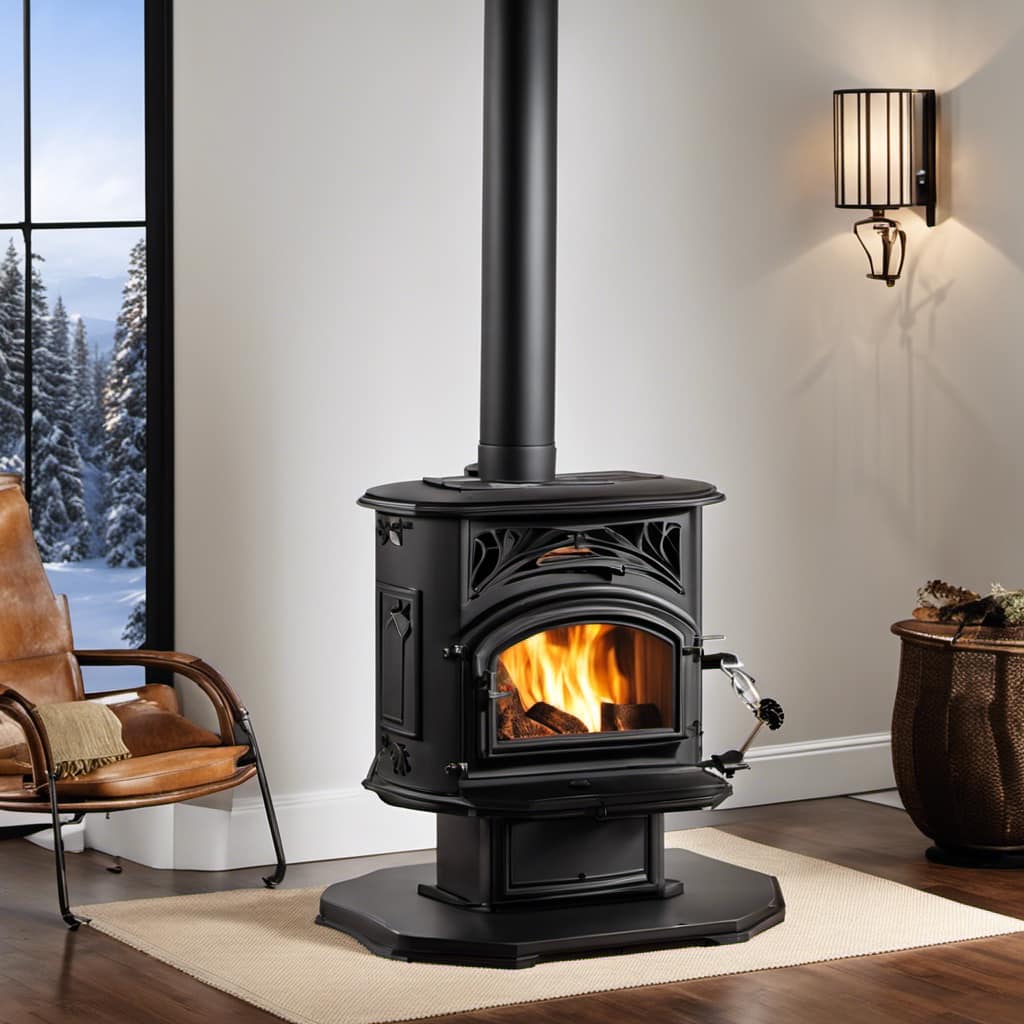
Key Takeaways
- Ash acts as an insulator, retaining heat inside the stove.
- Let the fire burn down completely before removing ash to prevent fire risk.
- Only leave a thin layer of ash to avoid hindering stove performance.
- Regularly clean out the ash to maintain a clean and efficient stove.
The Importance of Ash in Wood Stoves
I can’t believe how crucial ash is in my wood stove’s efficiency. Many people may think that ash is just a waste product that needs to be disposed of, but it actually has several benefits.
Firstly, ash acts as an insulator, helping to retain heat inside the stove. This means that less fuel is needed to maintain a steady temperature.
Additionally, ash can help with airflow regulation by providing a stable base for the firewood to rest on. It also helps to prevent the fire from smothering by allowing air to circulate underneath the logs.
As for ash disposal methods, I usually wait for the ash to cool down completely before removing it from the stove. I then transfer it to a metal container and store it in a safe place until I can properly dispose of it.

Factors to Consider When Leaving Ash in Your Wood Stove
When leaving ash in your wood stove, be mindful of the temperature and the amount of ash present. These are important factors to consider in order to maintain the efficiency and safety of your wood stove.
Firstly, it’s crucial to let the fire in your stove burn down completely before removing the ash. This ensures that any remaining embers are extinguished and prevents the risk of fire.
Additionally, the amount of ash left shouldn’t exceed one inch. Excess ash can restrict air flow, reducing the stove’s ability to burn efficiently.
However, it’s also important to note the benefits of ash in your wood stove. Ash acts as an insulator, helping to retain heat and improve combustion. It also contains valuable nutrients that can be used as fertilizer in your garden.
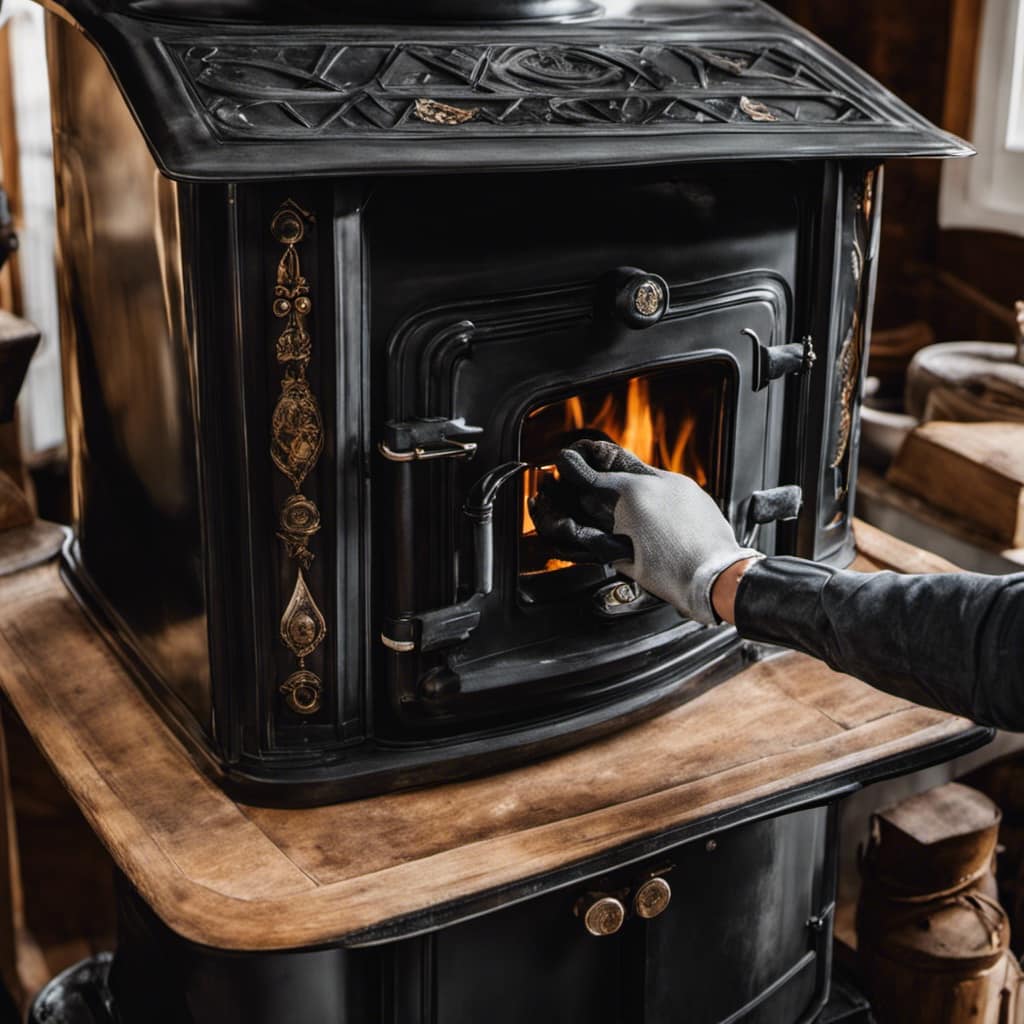
Therefore, while it’s important to clean out your wood stove regularly, leaving a small amount of ash can be beneficial.
Guidelines for Leaving Ash in Your Wood Stove
It is recommended to only leave a thin layer of ash in your wood stove, as excessive amounts can hinder the stove’s performance. While some may think that leaving more ash in the stove can provide better insulation and heat retention, it’s important to understand the potential dangers of doing so.
Firstly, excessive ash can restrict airflow and reduce the stove’s efficiency, leading to poor combustion and increased emissions. Additionally, a buildup of ash can increase the risk of chimney fires.
However, it’s worth noting that a small amount of ash can actually be beneficial in gardening. Ash contains important nutrients like potassium and calcium, which can enrich the soil and promote plant growth.
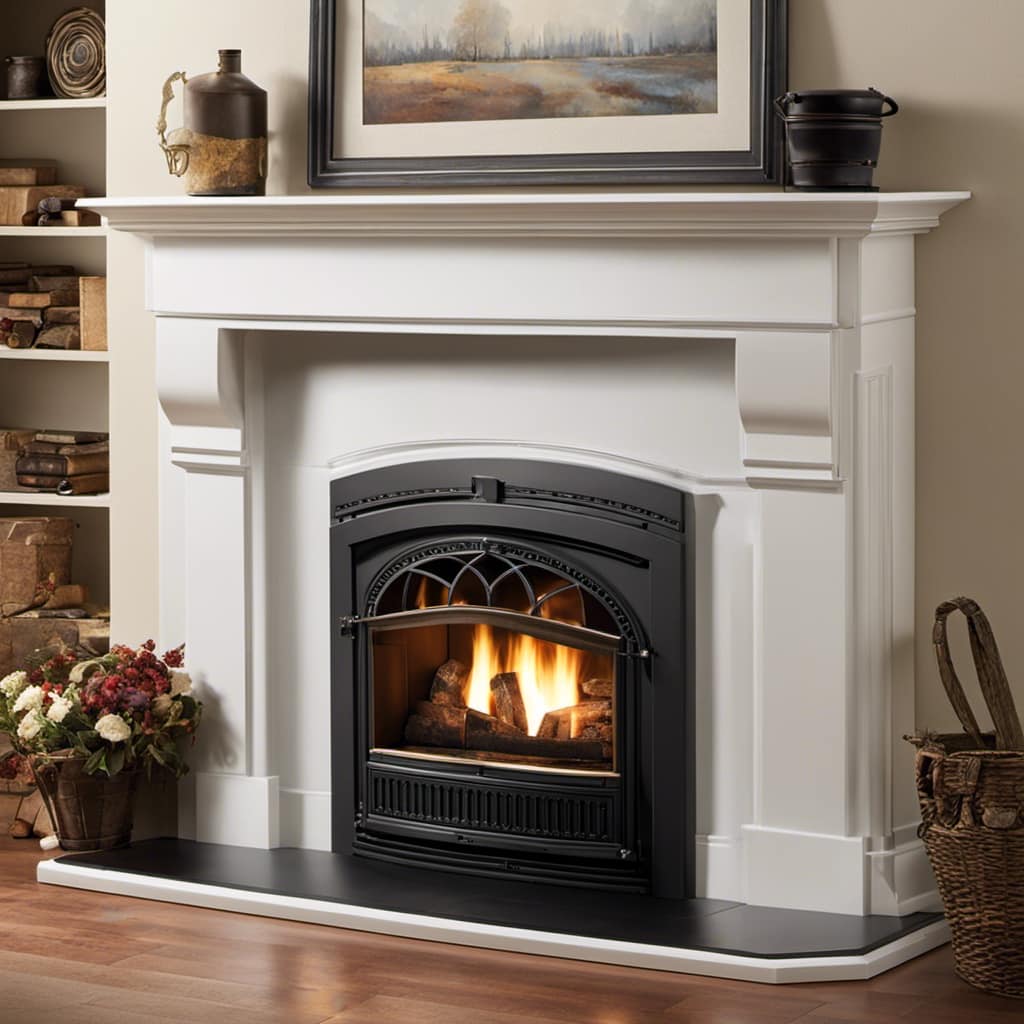
Signs That You Have Too Much Ash in Your Wood Stove
Noticing a decrease in heat output and an increase in smoke production are signs that you may have too much ash in your wood stove, causing it to function less efficiently. To avoid this common mistake, it’s important to regularly clean out the ash from your wood stove.
Here are some cleaning techniques to help you maintain optimal performance:
- Use a shovel or ash scoop to remove the excess ash
- Dispose of the ash in a metal container, away from combustible materials
- Clean the ash pan and grates using a brush or vacuum cleaner
- Regularly check and clean the chimney to prevent buildup and improve airflow
Tips for Properly Managing Ash in Your Wood Stove
I always make sure to regularly clean out the ash from my wood stove. Proper ash disposal is essential for maintaining a clean and efficient wood stove. One of the benefits of removing ash regularly is that it allows for better air circulation, which improves the overall combustion process. When ash accumulates, it can restrict airflow and hinder the stove’s performance.
Another advantage of proper ash disposal is that it prevents the buildup of creosote, a flammable substance that can lead to chimney fires. By removing the ash, you reduce the risk of dangerous situations.
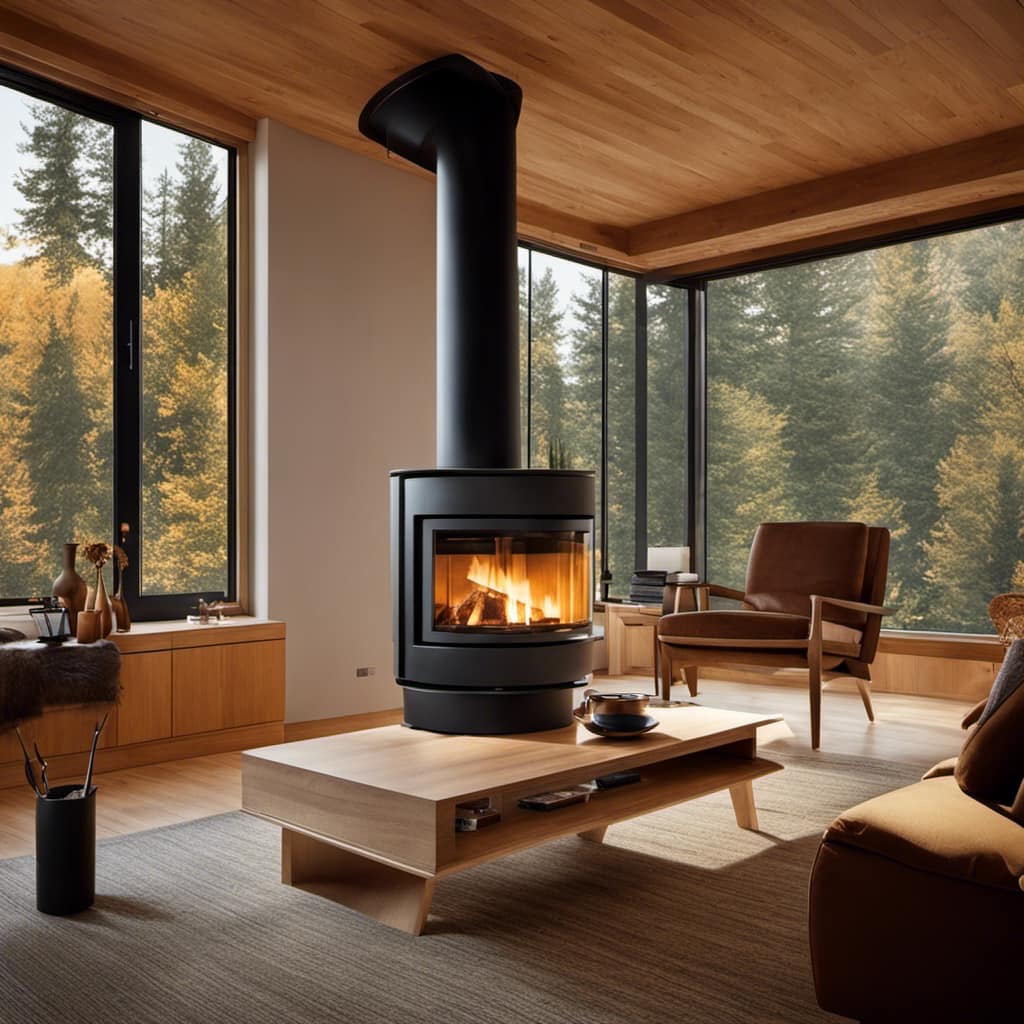
Additionally, regularly cleaning out the ash helps prolong the lifespan of your stove by preventing parts from getting clogged or damaged.
What is the Recommended Amount of Ash to Leave in a Wood Stove?
The recommended amount of ashes in stove varies depending on the type of wood and stove. As a general guideline, it is best to leave about an inch of ash at the bottom of the stove to help with insulation and heat retention. However, it’s important to clean out excess ash regularly to ensure proper airflow.
Frequently Asked Questions
How Often Should I Clean Out the Ash From My Wood Stove?
I clean out the ash from my wood stove every week to prevent a fire hazard. Leaving too much ash can increase the risk of a fire and reduce the stove’s efficiency.
Can Leaving Too Much Ash in My Wood Stove Cause a Fire Hazard?
Leaving too much ash in your wood stove can indeed cause a fire hazard. It can damage the stove and increase the risk of a chimney fire. However, there are benefits to using wood ash in compost.
What Is the Ideal Depth of Ash to Leave in a Wood Stove?
The ideal depth of ash to leave in a wood stove varies, but generally, about an inch is recommended. Leaving some ash helps insulate the firebox, improves combustion, and makes it easier to start a new fire.
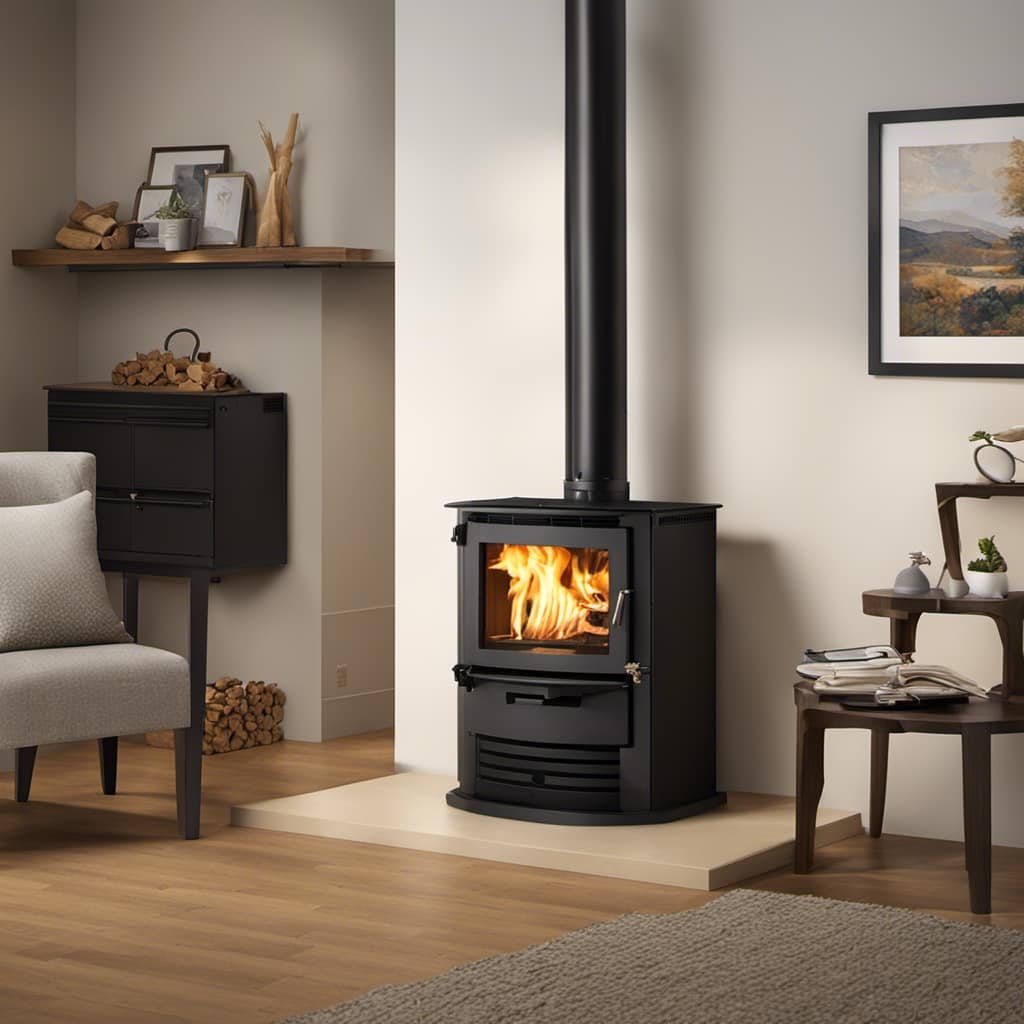
Will Leaving Ash in My Wood Stove Affect the Efficiency of the Stove?
Leaving ash in a wood stove can impact air quality and decrease efficiency. Ash helps maintain temperature by insulating the firebox. However, excessive ash can impede airflow and hinder combustion, so it’s important to find the right balance.
Can I Use the Ash From My Wood Stove as Fertilizer for My Garden?
Yes, you can use the ash from your wood stove as fertilizer for your garden. Using wood stove ash for composting has benefits such as providing nutrients and improving soil pH.
Conclusion
In conclusion, the amount of ash to leave in your wood stove is a crucial factor in maintaining its efficiency and safety. By following the guidelines and considering the factors discussed, you can ensure optimal performance of your stove.
Remember to regularly check for signs of excess ash and manage it accordingly. Properly managing ash in your wood stove won’t only enhance its functionality but also prolong its lifespan.
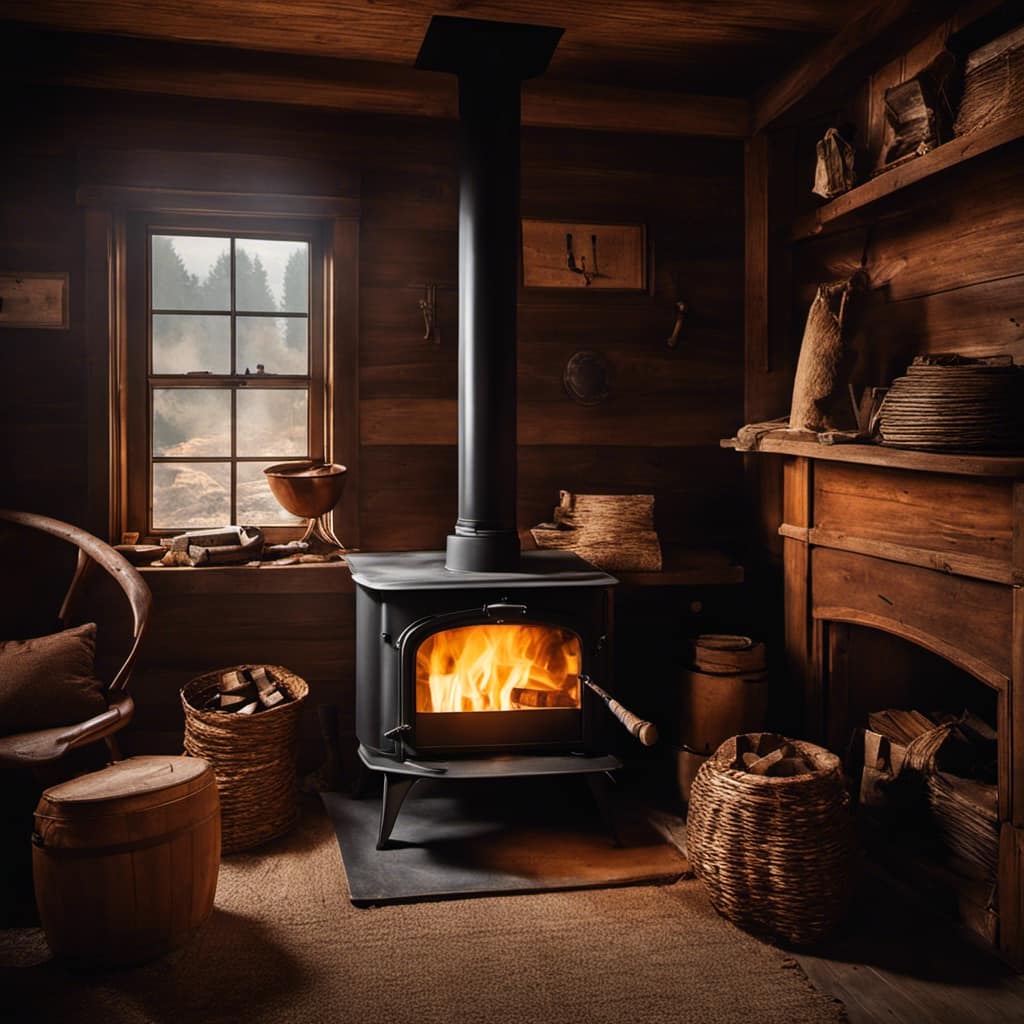
Growing up surrounded by the vast beauty of nature, Sierra was always drawn to the call of the wild. While others sought the comfort of the familiar, she ventured out, embracing the unpredictable and finding stories in the heartbeat of nature.
At the epicenter of every remarkable venture lies a dynamic team—a fusion of diverse talents, visions, and passions. The essence of Best Small Wood Stoves is crafted and refined by such a trio: Sierra, Logan, and Terra. Their collective expertise has transformed the platform into a leading authority on small wood stoves, radiating warmth and knowledge in equal measure.











